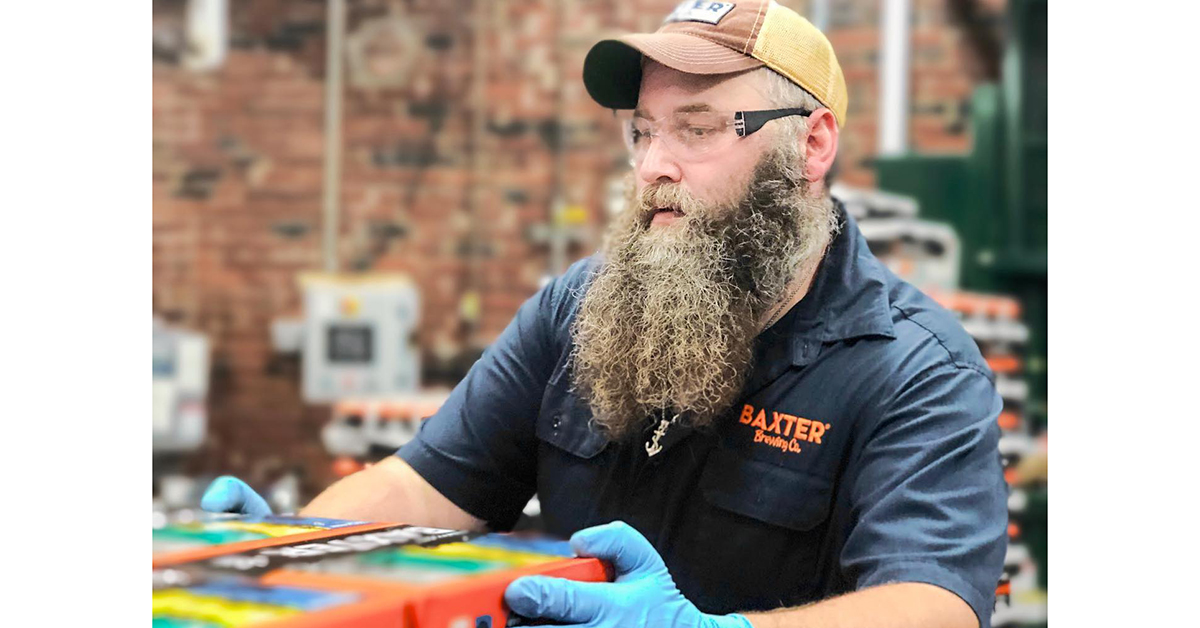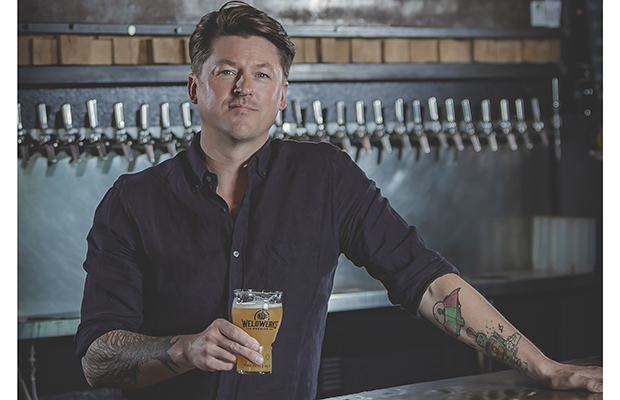
Baxter Brewing Quality Director Merritt Waldron recently spoke to Brewer on a variety of topics dealing with canning and we will share some of those pieces over the next few weeks.
One interesting thing that Waldron — whose book Quality Labs for Small Brewers: Building a Foundation for Great Beer is now available — spoke on was a step-by-step overlook of getting ready for a canning day.
With the pandemic, many breweries are limiting touchpoints between employees as much as possible. So having one shift set up the next shift without overlap can happen and still be structured and successful.
Waldron explained that at Baxter — which produced around 20,000 barrels per year — and his former brewery, Rising Tide (which is making around 5,000 bbls a year) both have similarities in that making sure SOPs are well written, detailed with valued measures, and not anecdotal information.
That means following your line from where the cans get fed in all the way down to packaging.
For Baxter, that starts with little things.
“Get your SOP done for your sanitizing,” Waldron said, who explained that Baxter runs two canning shifts for a total of 14 hours along with planning for cleaning and set up before and after for the canning team. “While they’re running that sanitizer/CIP cycle, they’re going to start going down the line turning on the depal, make sure the date coder is working, turning on the conveyors making sure that there is air and CO2 going through the line, making sure that the lines powered up.
“Some of it’s pretty obvious.”
But having this written out can be key, he adds.
The brewery has an Excel spreadsheet that tells the team each day what they are packing.
“If we’re doing 16 ounces, we’re going to get our labeler ready. If we are doing 12-ounce six-packs, we’re going to get our ringer or PakTech ready. If we’re running 12-packs, we’ll get our automatic carton maker ready,” he explained. “Nothing’s worse than getting the line started and then all of a sudden you get backed up and your six-pack ringer wasn’t on and not set up.
“Those are the kinds of things that are in the startup checklist.”
Then, at the end of a canning run, do the opposite to shut everything down, followed by cleaning trouble areas.
”Make sure you clean the outside of the line as well as CIPing the inside of the line,” Waldron said. ”Making sure everything’s in good order to be put away. Tidying up and actually getting set up for the next day is a huge one that’s really helped us.
”If we know we’re packaging our Lager the next day, we could switch out our IPA cans and put our Lager cans in and making sure that the depal is ready.”
A lot of the new processes Waldron said he has implemented have helped to set it up for the next person and make them successful.
“We have that mentality. I think that’s something that I’ve been implementing pretty well over the past couple of months, especially since COVID,” Waldron said.




Be the first to comment